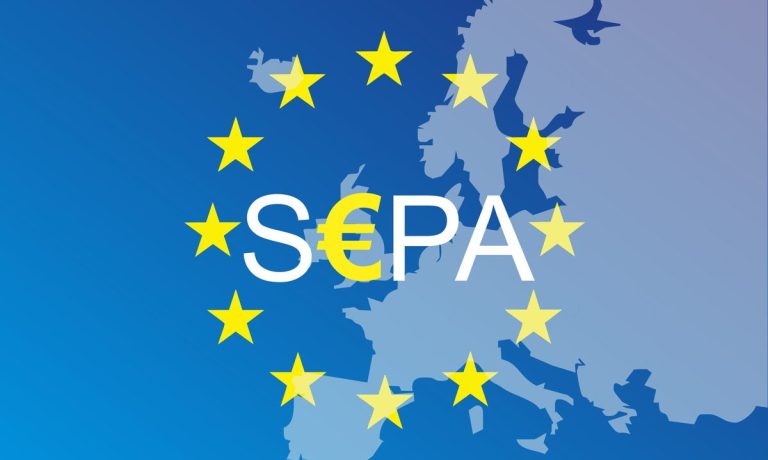The Single Euro Payments Area (SEPA) is an EU-led initiative intended to harmonize the way cashless euro payments are made across Europe. Every European Union country and several non-EU countries are a part of SEPA.
The basic premise of SEPA — that euro payments between any two member states should be as easy and frictionless as domestic ones — is one of the central pillars of the single market.
Despite the political will behind the project, there were a few hiccups along the way.
After some participants missed the initial deadline for SEPA compliance, the European Commission needed to grant a six-month extension to those that were dragging their feet. Yet by the end of 2014, the eurozone countries had rolled out the scheme in full and by 2016 it had been implemented across all SEPA member states.
Today, consumers and businesses within the SEPA can make easy euro transfers between accounts using only the International Bank Account Number (IBAN) of the receiving account.
Related: EU FinTechs, Central Bank of Ireland Take on IBAN Discrimination
Advertisement: Scroll to Continue
The pan-European standard for debit and credit transfers came at a time when domestic payments were already moving on to the next big thing: instant clearing. Ultimately for SEPA, although the initial goal of making cross-border euro payments as easy as domestic ones has become a reality, in many cases they are now much slower.
The problem, however, isn’t that SEPA doesn’t have its own real-time payment rail. It does.
SEPA Instant
Launched in November 2017, SEPA Instant Credit Transfers build on the SEPA architecture to enable payments to be cleared in 10 seconds or less. To do this, once a payment service provider recognizes a SEPA transaction as an instant payment, it processes and clears the full amount immediately instead of in batches like a regular credit transfer.
See also: Real-Time Demand Will Boost EU Open Banking Payments, Says Worldpay EMEA GM
In spite of the obvious potential contained within SEPA Instant, it has yet to deliver on its promise of super-fast euro transfers across the region.
According to the European Payments Council, after a surge in 2019, uptake of SEPA Instant seems to have significantly slowed. In Q1 2022 instant transactions accounted for less than 12% of all SEPA credit payments.
Read also: Lackluster Rollout of SEPA Instant Stymies EU Payment System Success, Says Wise Product Chief
Challenges for the Single Euro Payment Area
In light of the widespread use and application of national real-time payment schemes, why the slow rollout of SEPA Instant?
For starters, unlike the requirements written into the legislation upon which the SEPA was initially founded, there is no legally binding obligation for banks to offer real-time services. Even if a payer initiates an Instant Credit Transfer, if the account receiving the funds is with a bank that isn’t enrolled in the scheme, the payment defaults to a regular SEPA Credit transaction.
Read more: ECB’s Panetta Urges Firms to Adopt EU Instant Payment Solutions
What’s more, despite the fact that they are used by millions of Europeans every day, the success of real-time solutions at the national level may actually be hindering efforts to implement instant euro payments across borders.
Between the various national clearing houses and existing instant payment networks, interoperability becomes a challenge. Of course, these systems don’t necessarily compete with SEPA Instant, but they do divert attention away from the need for a SEPA-wide solution and risk fragmenting the European instant payments ecosystem.
In fact, the data suggests that fragmentation has already happened. As of June 2022, the ratio of SEPA Instant Credit Transactions versus regular SEPA Credit Transactions ranges from 100% instant in Slovenia to only 1% instant in Norway and Switzerland.
Of course, banks operating in non-eurozone countries have less incentive to offer real-time euro payments, but even in euro-using countries, usage is as low as 5% in Ireland and 10% in Luxembourg.
Related: Europe is Ripe for Instant Payments Where 73% of All Transactions are Still Done in Cash
One final hurdle inhibiting instant cross-border payments in the region is the way that many payment service providers charge an additional transaction fee for the service. While the SEPA legislation mandates that PSPs have to charge the same fees for domestic and international transactions within the single payment area, this requirement has not been extended to SEPA Instant Credit Transfers.
What’s Next for Cross-Border Euro Payments?
Thankfully, it’s not all bad news for the SEPA. As further fragmentation risks undermining the project’s core vision of pan-European payments integration, officials in Brussels have indicated that a more hands-on regulatory approach may soon be on the horizon.
When PYMNTS spoke to Gijs Boudewijn, general manager at the Dutch Payments Association, he said that he expects to see regulation passed in the third quarter of this year:
“The expectation is that [the European Payments Council] will make instant payments mandatory to provide [an] infrastructure to build possible European solutions as an alternative to the non-European solutions,” Boudewijn said, also hinting at a much-anticipated card payments scheme for the SEPA.
Watch the interview: Dutch Payments Association GM Says ‘Positive Friction’ Will Protect BNPL Users
Sign up here for daily updates on all of PYMNTS’ Europe, Middle East and Africa (EMEA) coverage.




